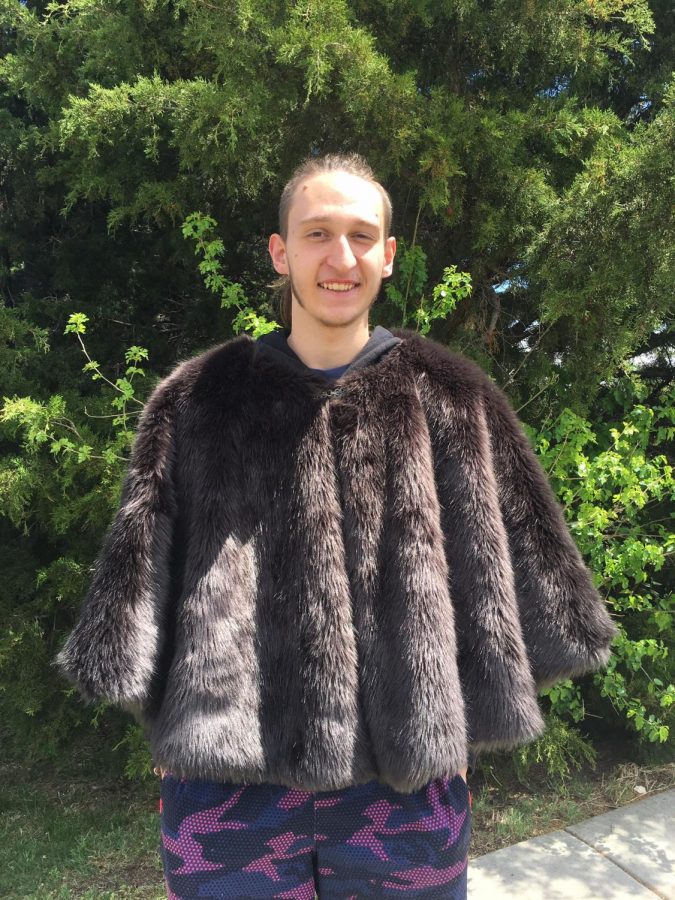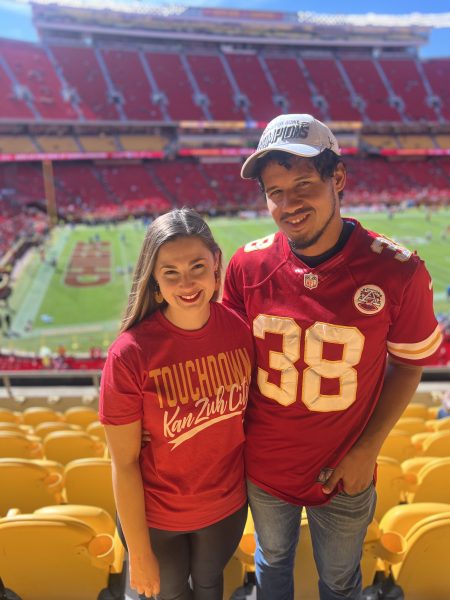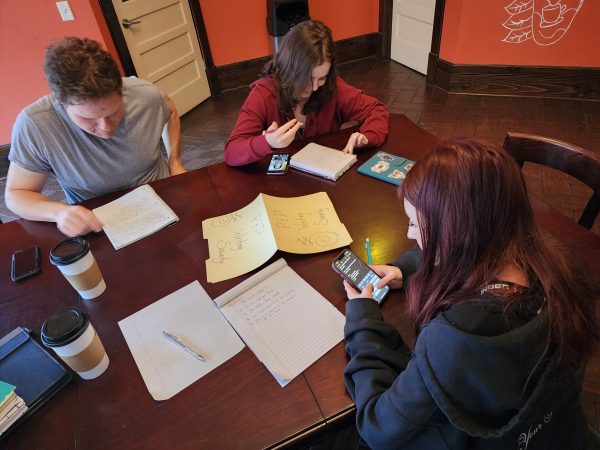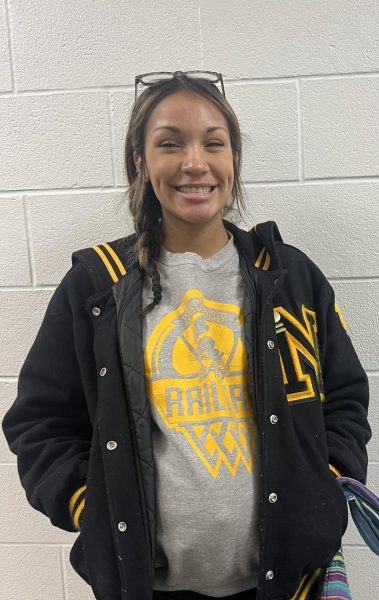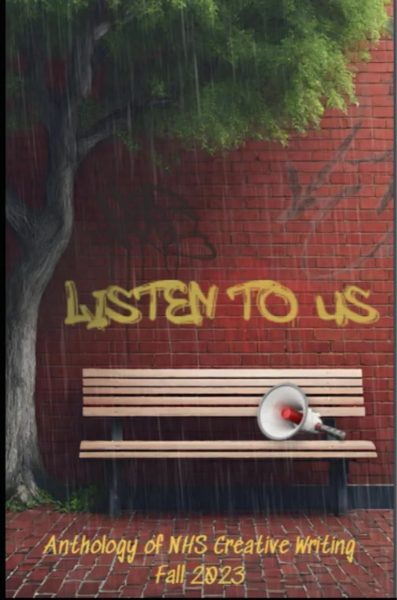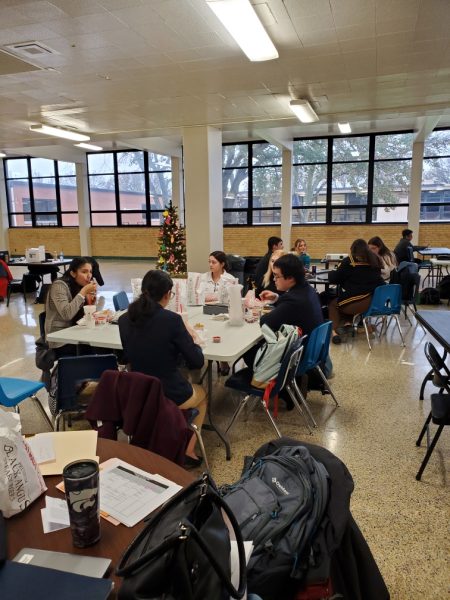Asatru
Ellis expresses unique religion through runes
More stories from Kaeden Thurber
Senior Dominic Ellis shows off his fur used in Asatru traditions, using it as one way to express his religion. Ellis celebrates many holidays surrounding Asatru religion.
While the traditional NHS student might attend church on Sundays, senior Dominic Ellis practices his unique religion of Asatru, also called Heathenism or Contemporary German Paganism.
Originally, Ellis’s family expected him to follow their religion and be a permanent Baptist. However, never feeling a connection to his parent’s chosen religion, Ellis converted to Asatru after being introduced to the religion two years ago at the Great Plains Renaissance Festival. People who follow the Asatru faith believe in ancient Germanic Gods and spirits.
“I always had an interest in Nordic history and then I found out about Nordic religion through some people at the Great Plains Renaissance Festival,” Ellis said.
Ellis taught himself Nordic runes, a Nordic replacement for the normal alphabet, as a way to better understand his chosen religion. Ellis is able to draw these symbols as well as read them and uses them to study Asatru.
“They [runes] help me read religious books and celebrate my gods on certain months. [I study] through the sagas and eddas, which are poems and stories written by people back in Nordic times,” Ellis said. “It’s kinda fun because a lot of other people don’t understand it.”
The Asatru religion teaches multiple values such as self reliance and being able to overcome problems. Ellis generally celebrates the gods Odin, Baldr, Freya and Thor. In times of celebration, Ellis commemorates the gods in various ways.
“Normally [you have] a feast or give sacrifices to our gods [when celebrating], like money or if you´re really in need of a god’s protection or help in a time of your life, you might sacrifice an animal,” Ellis said. “You can give the same thing to every god but some gods prefer different things, like Thor prefers wheat if you´re giving something from a farm. Odin would prefer something like apples or carrots.”
Runes, found in Norse mythology, are the letters of the nordic alphabet. Compared to the English alphabet students have been taught since kindergarten, extra letters exist in the nordic version.
“The symbol of protection itself is actually just one symbol, and it’s not a rune. It’s a circle with six lines and on the end of each line is a crescent shape and then three lines horizontally,” Ellis said. “The spelling of protection is actually runes, just the spelled version.”
Ellis displays his knowledge of the language by drawing symbols in classes such as choir. Senior Ian McCallister also sees Ellis’s symbols on his social media accounts in addition to the music department.
“I see them [the symbols] quite often, sometimes I could just be scrolling through Facebook and see that he posted something. A few of the other social media I’m following him on, he posts them quite often and everything,” McCallister said. “Then I’ll just go and randomly see them going through shopping apps and everything.”
Ellis said that his religion has had an impact on his life, bettering his outlook on existence and improving his views of other people.
¨It’s definitely helped a lot more with self reliance. I’m a lot more accepting of people, that’s one of the things that we try to do is while some people might hate on other people for their religion, Asatrus try and accept everyone,” Ellis said.

